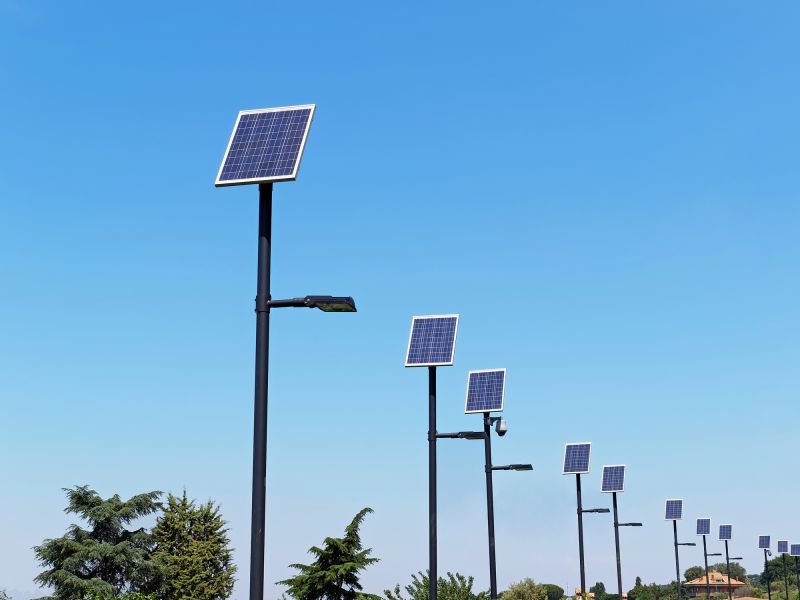Essential Products for Efficient Solar Tube Installation Projects
Equip yourself with the must-have products that streamline installation and improve light delivery in your space.
 Solar tube installation products are designed to harness natural sunlight and channel it into interior spaces, providing an energy-efficient lighting solution. These systems typically consist of a reflective tube that captures daylight from an external rooftop or wall vent and directs it into the desired room through a ceiling fixture. Proper selection of components ensures optimal light transmission, durability, and ease of installation. When considering solar tube products, it's important to evaluate factors such as the size and diameter of the tube, the quality of reflective lining, and compatibility with existing ceiling structures.
Solar tube installation products are designed to harness natural sunlight and channel it into interior spaces, providing an energy-efficient lighting solution. These systems typically consist of a reflective tube that captures daylight from an external rooftop or wall vent and directs it into the desired room through a ceiling fixture. Proper selection of components ensures optimal light transmission, durability, and ease of installation. When considering solar tube products, it's important to evaluate factors such as the size and diameter of the tube, the quality of reflective lining, and compatibility with existing ceiling structures.
Top Overall Option
High-Quality Reflective Solar Tube System
This versatile system features a durable, highly reflective internal lining designed to maximize daylight transmission. Its adjustable components and flexible tubing options allow for easy customization to fit various roof pitches and ceiling heights. Easy to install and maintain, it offers reliable performance for a range of interior lighting needs.
Types of Products For Solar Tube Installations
Rigid Solar Tubes
Solid, inflexible tubes that provide a direct path for light, suitable for straight runs and stable installations.
Flexible Solar Tubes
Flexible tubing options that allow for easier routing around obstacles and complex ceiling layouts.
Diffusers and Light Kits
Accessories that help diffuse light evenly and reduce glare, enhancing interior illumination quality.
Venting Kits
Components designed to vent excess heat or moisture, improving system performance and indoor air quality.
Adjustable Mounts
Mounting hardware that allows for angle adjustments to optimize sunlight capture.
Roof Flashings
Sealing and flashing components that ensure weather-tight installation on various roof types.
Insulated Tubes
Tubes with insulation layers to minimize heat transfer and improve energy efficiency.
Wall-Mounted Solar Tubes
Systems designed for wall installations, providing daylight access in interior rooms without roof access.
Light Diffusing Domes
Aesthetic domes that help distribute light evenly while adding a decorative element to ceilings.
Extension Kits
Additional tubing segments for extending the reach of the solar tube system.
Smart Light Sensors
Automation components that adjust lighting based on ambient light levels for enhanced convenience.
Sealing and Insulation Accessories
Components that improve airtightness and thermal performance of the installation.
Decorative Trim Rings
Finish trim pieces that enhance aesthetic appeal and cover installation gaps.
Weatherproof Caps
Protective caps that shield the system from debris and weather elements when not in use.
Popular Choices
Widely used for straightforward daylight channeling in various building types.
Preferred for complex or tight spaces where routing flexibility is needed.
Popular for enhancing light diffusion and reducing glare in interior spaces.
Commonly selected for weatherproofing and secure rooftop installation.
Frequently used to extend the reach of existing systems or customize length.
Trending for rooms where roof access is not feasible, offering interior daylight options.
Chosen for applications requiring thermal performance and energy efficiency.
Popular for optimizing sunlight capture through angle adjustments.
Favored for aesthetic appeal and even light distribution in living spaces.
Increasingly used for automation and convenience in daylight management.
Commonly selected for outdoor protection during off-hours or adverse weather.
Installation methods can vary from simple retrofit setups to more complex new construction integrations. Many products feature adjustable angles or flexible tubing options to accommodate different roof pitches and interior configurations. Additionally, some systems include diffusers or light kits that help diffuse the light evenly across the room, reducing glare and creating a more natural lighting experience. Maintenance is generally minimal, but choosing corrosion-resistant materials and secure sealing can prolong system lifespan and performance.
Advancements in solar tube technology have introduced features like enhanced reflectivity coatings, airtight seals, and modular components that simplify installation and customization. These improvements aim to maximize daylight capture and minimize heat loss or infiltration. When selecting a solar tube system, consider the size of the space to be illuminated, the local roof pitch, and the potential for expansion or upgrades in the future. Proper planning and component selection can lead to a seamless integration that enhances interior lighting without compromising structural integrity or aesthetics.
Key Buying Considerations
- Determine the appropriate diameter based on room size and daylight needs.
- Assess the roof pitch and structure to select compatible tubing and mounting hardware.
- Consider reflective lining quality to maximize light transmission efficiency.
- Evaluate weatherproofing features to prevent leaks and drafts.
- Choose between rigid or flexible tubing based on installation complexity and space constraints.
- Check for insulation options to improve thermal performance in temperature-sensitive environments.
- Ensure compatibility with diffusers or light kits for desired light diffusion and aesthetics.
- Review installation requirements and whether professional assistance is recommended.
- Look for durable materials resistant to corrosion and UV damage for longevity.
- Consider additional features like adjustable mounts or extension kits for customization.
- Verify system components for ease of maintenance and future upgrades.
- Analyze seal and flashing options to ensure weather-tight installation on various roof types.
- Assess the size and design of diffusers or domes for aesthetic integration.
- Research automation options like smart sensors for enhanced convenience.
- Factor in budget constraints while balancing quality and features.
